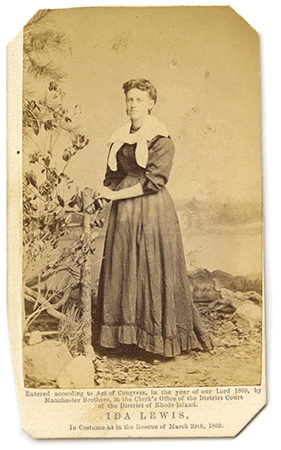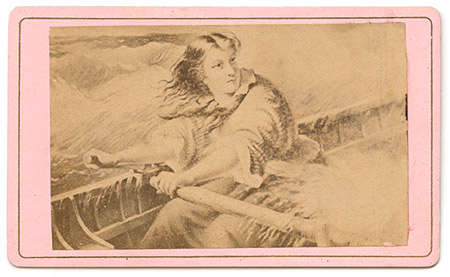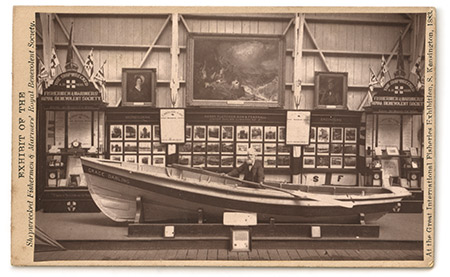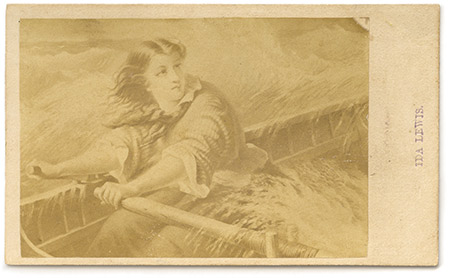Marking time in August 2018
Mixed-up celebrity heroines
Here is an interesting case of two young women, both daughters of lighthouse keepers, who were celebrated for feats of heroism, and represented in carte-de-visite form.
Grace Darling (1815–1842) was the daughter of an English lighthouse keeper. In 1838, in a strong gale and thick fog she and her father rescued nine survivors of a shipwreck—for this she became famous.
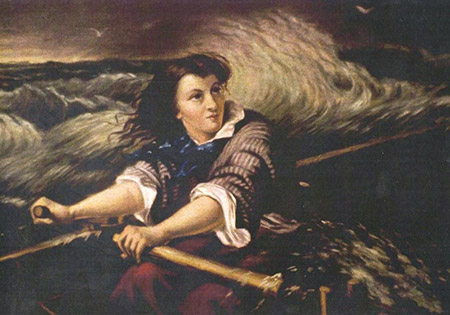
ON the 7th of September, 1818, the ‘Forfarshire,’ in the midst of a terrific storm, struck upon Hawker’s Rock, in the Farne Islands; broke in two, and all those in the after end of the vessel perished. Half a mile from the wreck stood the Longstone Lighthouse where GRACE DARLING and her father were. She, hearing the shrieks of the survivors, earnestly entreated her father to join her in rescuing them. He pointed to the furious waves, and asked what could be done in such a sea as that. At length, in compliance with her entreaties, he yielded, and the coble was launched with the aid of the father and the mother of the heroine, and out the father and daughter went into that mountainous sea, death in their wake and mercy and compassion piloting them. They reached the wreck, and one by one the nine unfortunate survivors were got into the coble, one of them, a mother still fondling to her heart the bodies of her two children who had perished during the night. GRACE DARLING and her father at length regained the Lighthouse but such was the severity of the gale that for two days and nights the grateful voyagers were imprisoned there, and from its summit looked down upon the raging sea from which they had been so nobly rescued.
Grace was widely represented as a symbol of bravery and pluck. Perhaps W H Overend had this heroic image in mind when he drew the Christmas pudding for the lighthouse.
Grace died of tuberculosis at the age of 26 but the story of her saintly actions continued to be told and magnified. The rowing boat became a treasured relic—it appeared at exhibitions, featured in cinemas, and is now the centrepiece of a museum.
Ida Lewis (1842–1911) was born in Newport, Rhode Island. Her father was the keeper of Lime Rock Light. He had a stroke and became disabled when Ida was still a child, but Ida and her mother continued to operate the lighthouse while they looked after their father and husband.
In 1869, at the age of twelve, Ida rescued four men whose boat had capsized. This event was widely reported, and not just in America. A Sydney newspaper recalled the story of Grace Darling and called Ida the American Grace Darling. The stories of the two women, Grace and Ida, seem to have been merged in the popular imagination. They both came to represent an ideal of female selfless bravery.
Ida went on to carry out other rescues. She is credited with saving the lives of 18 people, or perhaps as many as 25—accounts vary.
Ida Lewis and her exploits were celebrated in popular photographs like the two cartes-de-visite collected here. Her story was also told in many books, illustrated magazine articles, newspaper stories, a radio play and a film.
